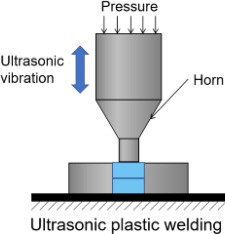Last updated on May 9, 2024
Ultrasonic Technology is important for plastic welding due to its numerous advantages and applications in the industry. Here are some reasons why ultrasonic technology is important for plastic welding.
- Speed and Efficiency
Ultrasonic plastic welding allows for rapid and efficient joining of plastic parts. The process is typically completed within seconds or milliseconds, depending on the size and complexity of the parts being welded. This speed enables high-volume production and increases overall manufacturing efficiency.
- Strong and Reliable Joints
Ultrasonic welding creates strong and reliable bonds between plastic parts. During the welding process, high-frequency mechanical vibrations are applied to the parts, causing localized heating and softening of the plastic. As the vibrations cease, the softened material solidifies, resulting in a robust and durable joint. The strength of the weld is often comparable to or even stronger than the original material.
- Automation and Precision
Ultrasonic welding can be easily integrated into automated production lines, enabling high-speed and consistent welding of plastic components. Robotic systems can accurately position the parts and control the welding parameters, ensuring precise and repeatable results. The ability to automate the process enhances productivity and reduces labor costs.
Overall, the importance of ultrasonic technology in plastic welding lies in its speed, efficiency, versatility, reliability, energy efficiency, and safety. These factors make it a preferred choice for joining plastic parts in various industries, offering significant advantages in terms of production speed, product quality, and cost-effectiveness.

